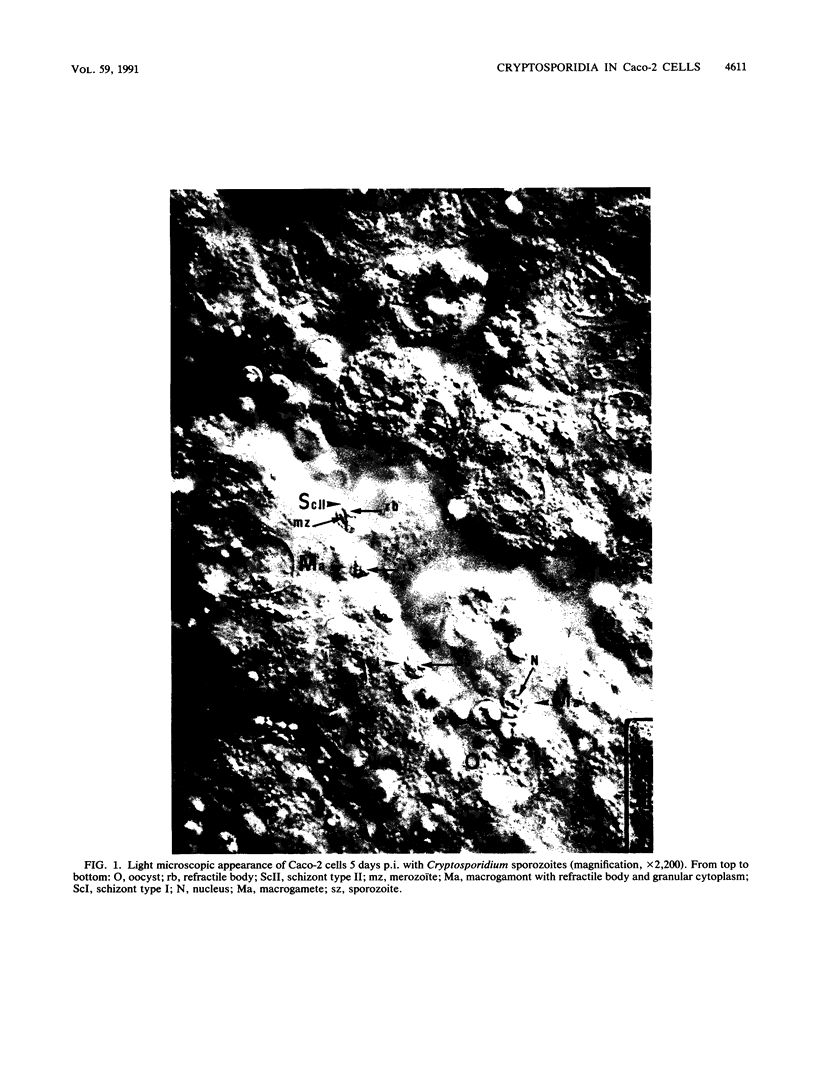Abstract
We used the spontaneously differentiated human intestinal epithelial cell line Caco-2 to develop an in vitro model of Cryptosporidium sp. infection. The mean cell infection rate was 3% +/- 2%. Asexual stages of cryptosporidia were observed on day 2 postinoculation. Transmission electron microscopy showed the presence of macrogametes at day 5. This cell line appears to be suited to the study of the mechanisms by which biological agents inhibit both sexual and asexual development of cryptosporidia.
Full text
PDF



Images in this article
Selected References
These references are in PubMed. This may not be the complete list of references from this article.
- Arrowood M. J., Sterling C. R. Isolation of Cryptosporidium oocysts and sporozoites using discontinuous sucrose and isopycnic Percoll gradients. J Parasitol. 1987 Apr;73(2):314–319. [PubMed] [Google Scholar]
- Current W. L., Haynes T. B. Complete development of Cryptosporidium in cell culture. Science. 1984 May 11;224(4649):603–605. doi: 10.1126/science.6710159. [DOI] [PubMed] [Google Scholar]
- Current W. L., Long P. L. Development of human and calf Cryptosporidium in chicken embryos. J Infect Dis. 1983 Dec;148(6):1108–1113. doi: 10.1093/infdis/148.6.1108. [DOI] [PubMed] [Google Scholar]
- Flanigan T. P., Aji T., Marshall R., Soave R., Aikawa M., Kaetzel C. Asexual development of Cryptosporidium parvum within a differentiated human enterocyte cell line. Infect Immun. 1991 Jan;59(1):234–239. doi: 10.1128/iai.59.1.234-239.1991. [DOI] [PMC free article] [PubMed] [Google Scholar]
- McDonald V., Stables R., Warhurst D. C., Barer M. R., Blewett D. A., Chapman H. D., Connolly G. M., Chiodini P. L., McAdam K. P. In vitro cultivation of Cryptosporidium parvum and screening for anticryptosporidial drugs. Antimicrob Agents Chemother. 1990 Aug;34(8):1498–1500. doi: 10.1128/aac.34.8.1498. [DOI] [PMC free article] [PubMed] [Google Scholar]
- Tzipori S. Cryptosporidiosis in perspective. Adv Parasitol. 1988;27:63–129. doi: 10.1016/S0065-308X(08)60353-X. [DOI] [PMC free article] [PubMed] [Google Scholar]





